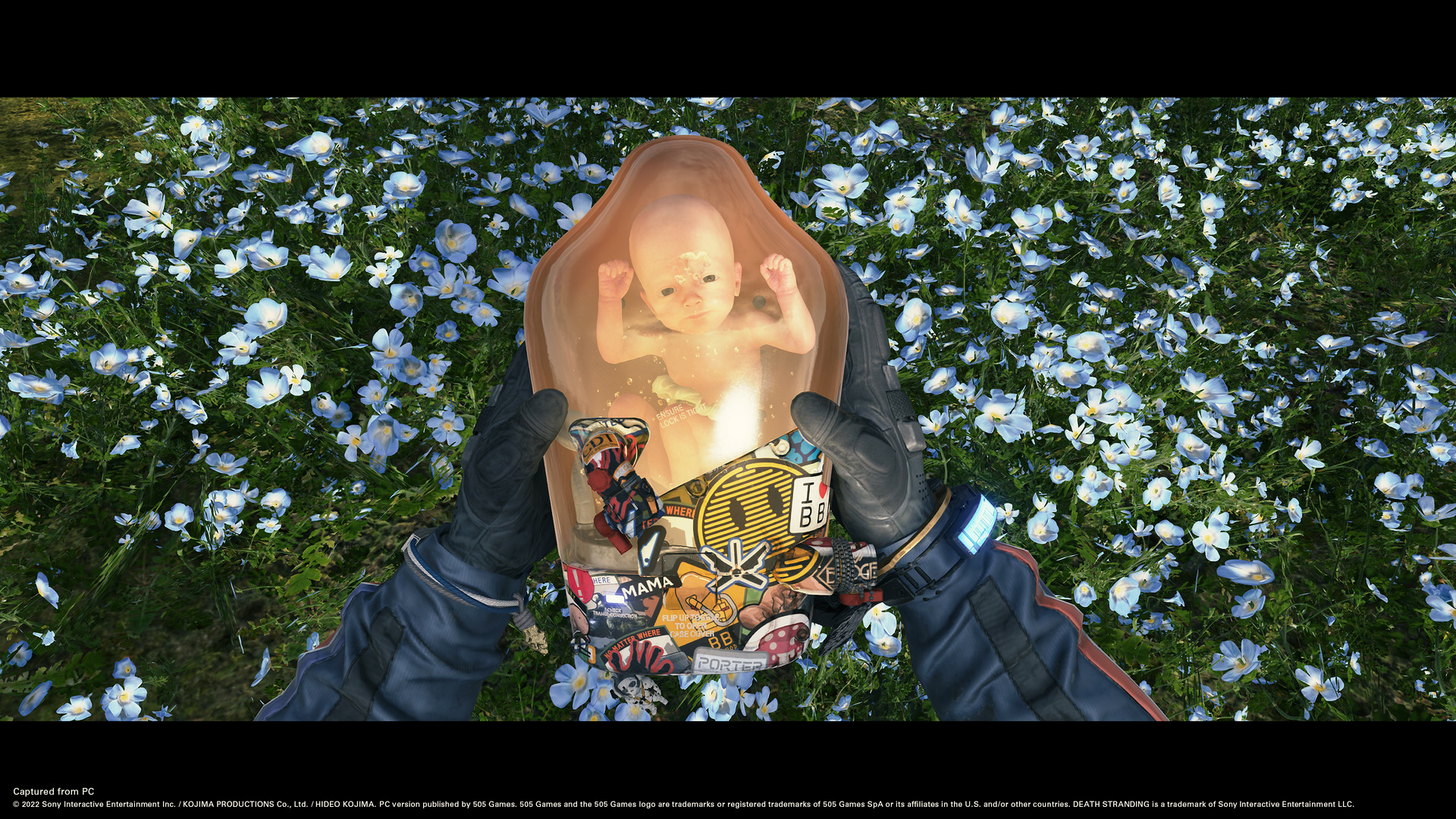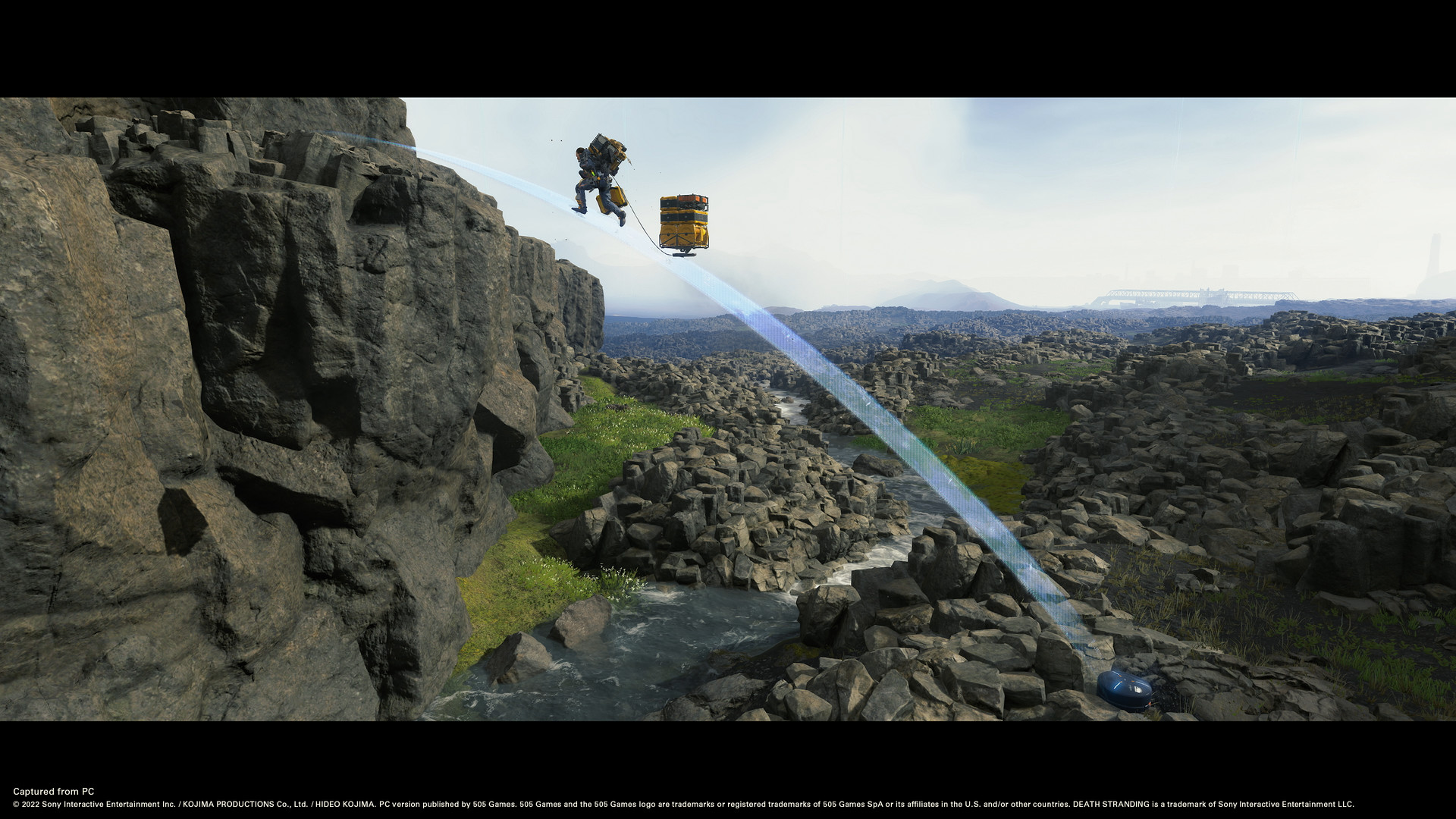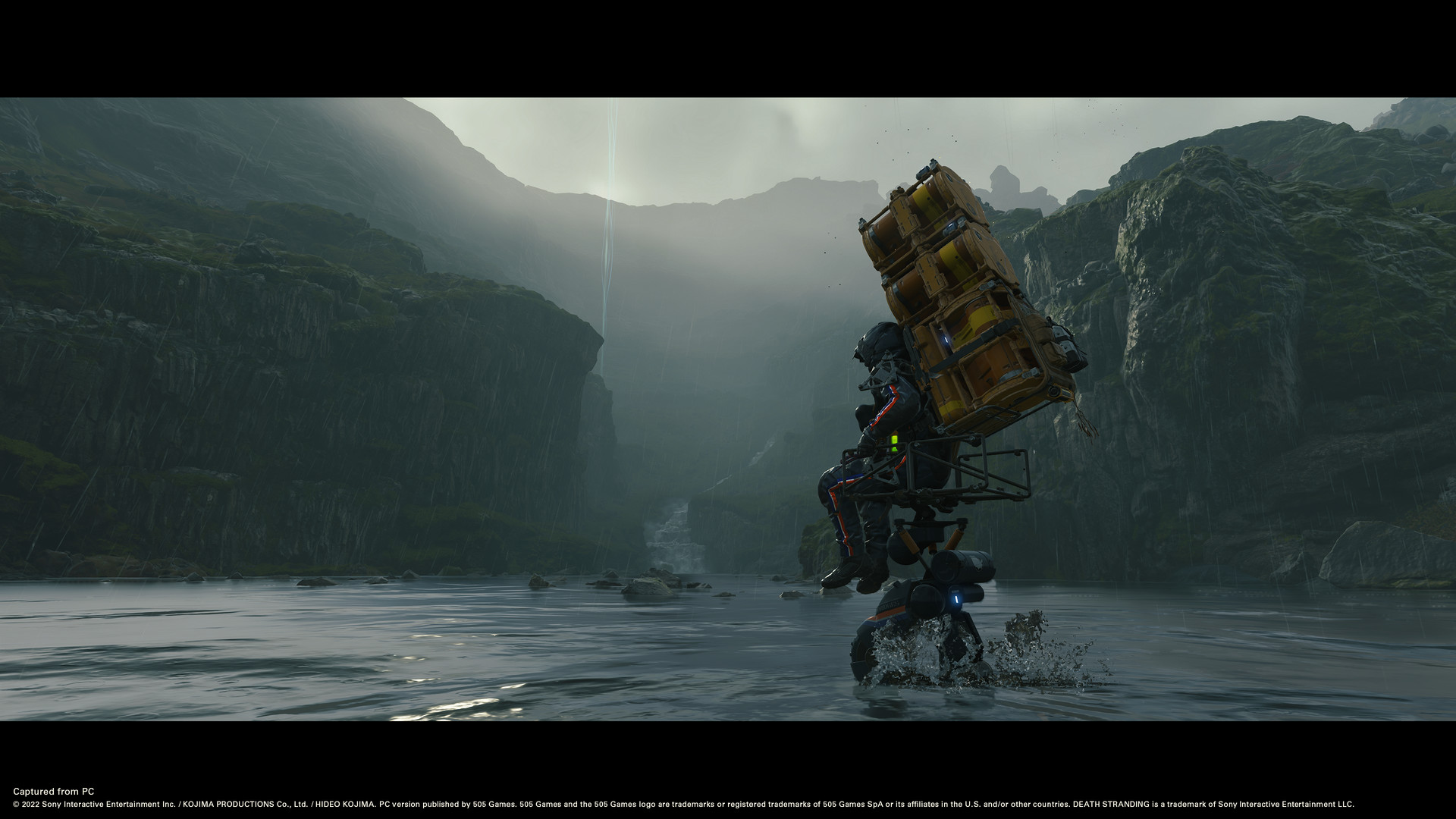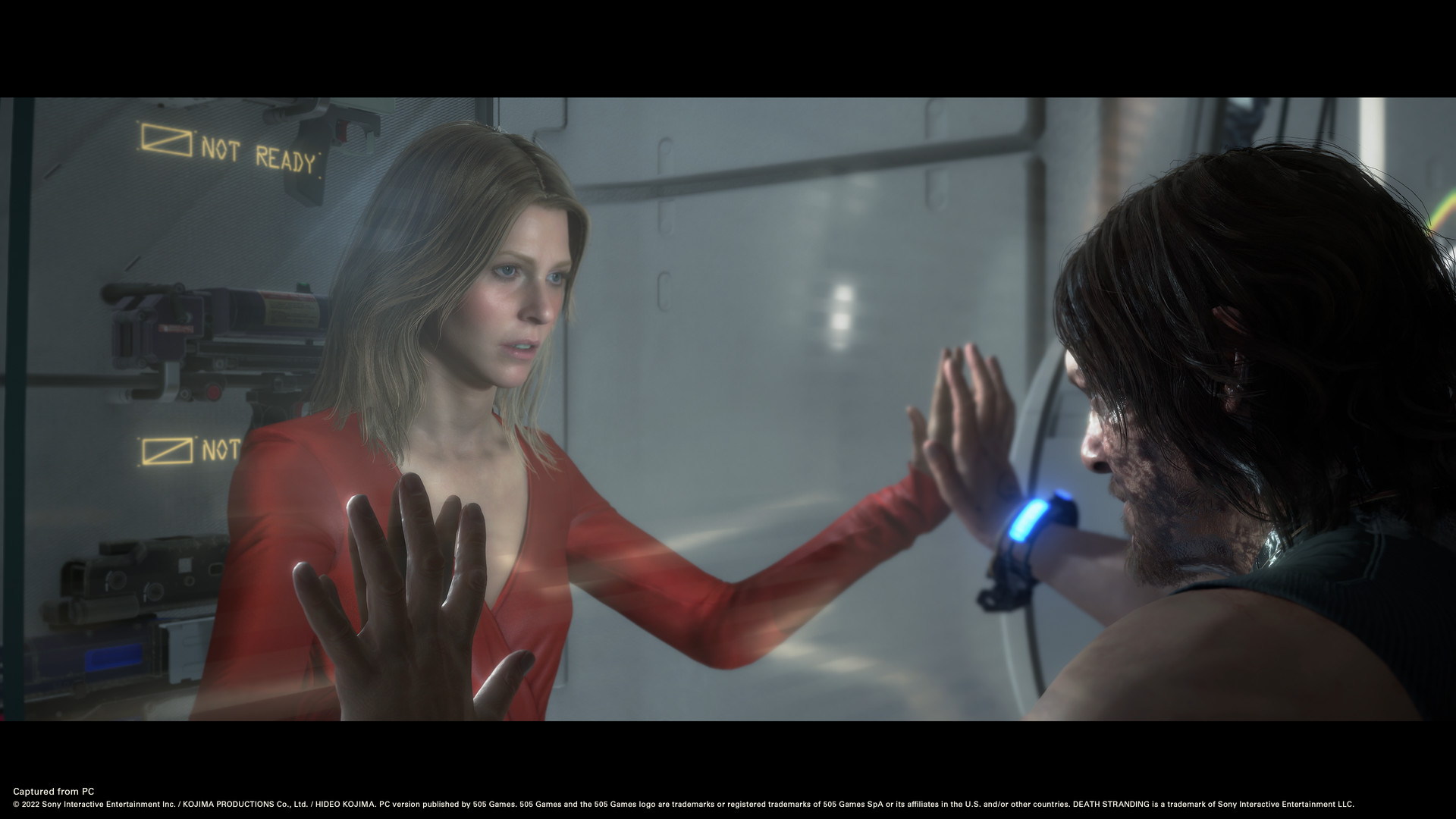Key Highlights
- Death Stranding: Director’s Cut, created by legendary game creator Hideo Kojima, offers an immersive and unique gaming experience.
- The game follows the journey of Sam Porter Bridges, played by Norman Reedus, as he navigates a post-apocalyptic world.
- With its stunning visuals, engaging gameplay, and deep narrative, Death Stranding: Director’s Cut is a must-play for gamers looking for a unique and thought-provoking experience.
- The director’s cut version of the game includes new features, improved mechanics, and additional content, making it even more enticing for players.
- Death Stranding: Director’s Cut has received critical acclaim and has sparked discussions about its genre, gameplay mechanics, and impact on video gaming culture.
- Whether you’re a casual gamer or a fan of Hideo Kojima’s work, Death Stranding: Director’s Cut offers a captivating and unforgettable gaming experience.
Introduction
Welcome to the fascinating world of Death Stranding: Director’s Cut, a game that pushes the boundaries of storytelling, gameplay mechanics, and artistic design. Created by the legendary game creator Hideo Kojima, known for his work on the Metal Gear Solid series, Death Stranding takes players on a journey through a post-apocalyptic world where connections and human relationships are at the core of the narrative.
In Death Stranding, players assume the role of Sam Porter Bridges, portrayed by Norman Reedus, as he traverses a ravaged wasteland filled with otherworldly creatures, known as BTs. As a courier for an organization called Bridges, Sam’s mission is to reconnect the isolated communities of the United States, known as the Knot Cities, by delivering essential supplies and establishing a network called the Chiral Network. However, with the threat of mass extinction looming, Sam’s journey becomes even more crucial in saving humanity from impending annihilation, including thwarting deadly plots by terrorists and their leader, Higgs Monaghan (Troy Baker).
The game’s unique vision and atmospheric setting have made it a standout title in the gaming industry. With its open-world exploration, strategic gameplay mechanics, and thought-provoking story, Death Stranding offers an experience like no other. Whether you’re a fan of Hideo Kojima’s previous work or new to his games, Death Stranding: Director’s Cut is sure to captivate and challenge players with its innovative gameplay and engrossing narrative. Plus, the Director’s Cut includes exciting crossover content from popular games like Cyberpunk 2077 and the highly anticipated Death Stranding Director’s Cut, adding even more depth to the already fascinating world of Death Stranding.
Exploring the Unique Vision of Hideo Kojima in Death Stranding
When it comes to pushing the boundaries of storytelling and gameplay mechanics, legendary game creator Hideo Kojima is no stranger. With Death Stranding, Kojima and his team at Kojima Productions have once again delivered a gaming experience that defies traditional conventions. Death Stranding showcases the unique vision of director Hideo Kojima, combining elements of action, exploration, and emotional storytelling to create a truly immersive experience with a highly anticipated release date.
Kojima’s games are known for their intricate narratives and thought-provoking themes, and Death Stranding is no exception. The game explores concepts of connection, isolation, and the human condition in a post-apocalyptic world. Kojima’s attention to detail and his knack for creating complex characters and compelling storylines shine through in Death Stranding, making it a standout title in the gaming landscape.
The Genesis of Death Stranding Post-Metal Gear
After Kojima’s departure from Konami and the completion of his work on the Metal Gear Solid series, fans eagerly awaited his next project. Death Stranding emerged as Kojima’s first post-Metal Gear game and marked the birth of his new studio, Kojima Productions.
With Death Stranding, Kojima sought to create a game that was different from his previous work while still showcasing his unique storytelling style. The game’s development was shrouded in secrecy, with enigmatic trailers and teasers building anticipation among fans.
As Kojima’s first independent project, Death Stranding allowed him to explore new creative avenues and take risks in game design. The result is a game that is both familiar and fresh, blending elements of open-world exploration, strategic gameplay, and deep narrative storytelling.
A Deep Dive into the Game’s Narrative and Theme
At its core, Death Stranding: Director’s Cut is a game about connection and the resilience of the human spirit in the face of adversity. The game’s narrative unfolds through a series of supernatural events and explores themes of isolation, the power of human connection, and the consequences of our actions.
As players progress through the game, they unravel the mysteries of the Death Stranding, a cataclysmic event that has caused the barrier between the world of the living and the afterlife to become blurred. The narrative is filled with complex characters, unexpected twists, and thought-provoking philosophical concepts.
Death Stranding: Director’s Cut invites players to reflect on the nature of humanity and the importance of forging meaningful connections in an increasingly divided world. It is a game that challenges players to think beyond the surface level and delve into deeper themes and ideas.

The Mechanics of Connection: Gameplay and Features
Embark on a journey delving into the intricate mechanics of connection within Death Stranding. This unique gameplay experience unveils the innovative Strand System, shaping player interactions and the unfolding narrative. As you navigate the ravaged wasteland, the environment itself becomes a strategic ally or adversary, influencing your every move. Explore the symbiotic relationship between the terrain and your decisions, immersing yourself in a world where connectivity is the key to survival and progression. Experience gaming like never before through this visionary creation of Hideo Kojima, now available on iOS.
Understanding the Strand System and Its Impact on Gameplay
The strand system in Death Stranding is a unique gameplay mechanic that sets it apart from other games. It allows players to contribute to the game world and interact with other players indirectly. By leaving helpful items, structures, and even messages for other players, the strand system fosters a sense of cooperation and collaboration. Players can also receive assistance from other players in the form of structures and tools left behind. This adds a layer of strategy to the gameplay, as players must strategically plan their routes and utilize the resources provided by other players. The strand system not only enhances the gameplay experience but also reinforces the game’s theme of connection and the importance of community.
The Role of the Environment and Terrain in Player Strategy
The environment and terrain play a crucial role in Death Stranding and greatly impact player strategy. The game’s world is a vast and treacherous landscape, filled with rugged mountains, deep rivers, and hazardous weather conditions. Players must carefully navigate these obstacles to successfully deliver packages and establish connections. The terrain can affect the player’s movement speed, balance, and stamina, requiring them to adapt their strategy accordingly. The environment also poses threats in the form of BTs, otherworldly creatures that can detect players through sound and movement. Players must employ stealth tactics and utilize tools such as ladders and ropes to overcome these challenges. The dynamic and immersive environment adds an extra layer of depth to the gameplay, making each journey a unique and strategic experience.
The Artistic Elements of Death Stranding
Death Stranding is known for its stunning artistic elements, including its visuals and design. The game features breathtaking landscapes, detailed character models, and atmospheric lighting effects. The post-apocalyptic world is rendered in meticulous detail, creating a sense of immersion and realism. The character designs are unique and memorable, with each character having their distinct appearance and personality. The art direction and design choices in Death Stranding contribute to the game’s overall aesthetic and enhance the storytelling experience. The Director’s Cut version of the game further enhances the artistic elements, with improved graphics and enhanced visual effects.
Analyzing the Game’s Visuals and Design
Death Stranding’s visuals and design are a visual feast for the eyes. The game features stunning landscapes, ranging from rugged mountains to vast open plains. The attention to detail in the environment is remarkable, with realistic weather effects, dynamic lighting, and intricate world-building. The character designs are equally impressive, with lifelike facial animations and unique costumes that reflect the game’s post-apocalyptic setting. The Director’s Cut version of the game further enhances the visuals and design, with improved graphics and additional visual effects for the PC version. The visual presentation of Death Stranding is a testament to the skill and creativity of the development team, creating a visually immersive and captivating gaming experience.
The Soundtrack and Its Contribution to the Atmosphere
The soundtrack of Death Stranding is a masterpiece that enhances the game’s atmosphere and emotional impact. Composed by Ludvig Forssell, the music perfectly captures the haunting and ethereal nature of the game’s world. From ambient tracks that create a sense of tranquility to intense and dramatic pieces that accompany intense gameplay moments, the soundtrack adds depth and emotion to the overall experience. The Director’s Cut version of the game features additional music and enhanced audio design, further immersing players in the game’s atmospheric world. The soundtrack of Death Stranding is a standout feature that adds to the emotional resonance and immersive nature of the game.

The Characters and Performances that Drive the Story
Death Stranding features a cast of captivating characters, each with their unique personalities and motivations. The performances of the voice actors bring these characters to life and drive the emotional core of the story. Norman Reedus delivers a standout performance as Sam Bridges, the game’s protagonist. His portrayal of Sam’s journey and inner struggles adds depth and nuance to the character. The supporting cast, including Mads Mikkelsen, Léa Seydoux, Margaret Qualley, Troy Baker, Tommie Earl Jenkins, and Lindsay Wagner, also deliver memorable performances that further enrich the storytelling experience. The performances and character development in Death Stranding are a testament to the talent and craftsmanship of the actors and contribute to the game’s immersive narrative.
A Closer Look at Sam Bridges – The Protagonist
Sam Bridges, portrayed by Norman Reedus, is the protagonist of Death Stranding. He is a courier tasked with reconnecting a fractured society in a post-apocalyptic world. Sam is a complex and multifaceted character, haunted by his past and burdened by the weight of his responsibilities. Throughout the game, players witness Sam’s emotional journey as he grapples with loss, isolation, and the importance of human connection. Norman Reedus delivers a compelling performance, bringing depth and authenticity to the character. Sam’s struggles and growth drive the story of Death Stranding, and players become emotionally invested in his journey, making him a memorable and relatable protagonist in a world that is desperately trying to reunite America as part of BRIDGES, the organization led by his adoptive mother, Bridget Strand.
Supporting Cast and Their Roles in the Narrative
The supporting cast of Death Stranding plays a crucial role in the game’s narrative, adding depth and complexity to the story. Mads Mikkelsen portrays Clifford Unger, a mysterious character with a tragic past. His enigmatic presence and compelling performance as Clifford Unger contribute to the intrigue and suspense of the game. Léa Seydoux and Guillermo del Toro also deliver standout performances, bringing their characters to life and adding layers to the overall storytelling. The supporting cast’s roles in the narrative, including Clifford Unger, provide additional perspectives and motivations, shaping the player’s understanding of the game’s world and the challenges faced by the characters. The performances of the supporting cast, particularly Clifford Unger, enhance the immersive and emotional nature of Death Stranding’s narrative.
The Community and Multiplayer Aspect
Death Stranding incorporates a unique multiplayer aspect that encourages player interaction and community building. While players do not directly interact with each other in real-time, they can leave helpful items, structures, and messages for other players in the game world. This asynchronous multiplayer feature fosters a sense of community and collaboration, as players can benefit from the actions of others and contribute to the game world collectively. The multiplayer aspect of Death Stranding adds a layer of depth and immersion, reinforcing the game’s themes of connection and the importance of human interaction.
How Player Interactions Define the Gaming Experience
Player interactions play a crucial role in defining the gaming experience of Death Stranding. The ability to leave helpful items, structures, and messages for other players creates a sense of camaraderie and cooperation. Players can benefit from the actions of others, such as using structures left by other players to navigate treacherous terrain or delivering lost cargo for them. Additionally, community events and challenges provide opportunities for players to come together and work towards a common goal. These player interactions enhance the overall gaming experience, fostering a sense of community and collaboration within the game world.
Examples of Memorable Community Events and Creations
One example of a memorable community event in Death Stranding is the construction of roads. Players can contribute materials and resources to build roads that connect different settlements in the game world. These roads make travel easier for all players and help establish a sense of connectivity within the game world. Another example is the creation of shared structures and tools, such as bridges and ladders, that players can use to overcome obstacles and navigate the environment. These player-created assets enhance the gameplay experience and exemplify the collaborative nature of the Death Stranding community. The creativity and generosity of players in Death Stranding result in memorable and impactful moments that further reinforce the game’s themes of connection and cooperation.

Critique and Reception: A Polarizing Masterpiece
Death Stranding has received a polarizing reception from critics and players alike. While some praise the game’s innovative gameplay mechanics, immersive narrative, and stunning visuals, others find it confusing, slow-paced, and self-indulgent. The game’s unique and unconventional approach to storytelling and gameplay has been both lauded and criticized. Despite the mixed reception, Death Stranding has garnered a dedicated fan base and has become a cult classic in the gaming community. The Director’s Cut version of the game aims to address some of the criticisms while providing additional content and features for players to enjoy.
Highlights from Critical Reviews and Player Feedback
Critical reviews of Death Stranding have been divided, with some praising its innovative gameplay mechanics, immersive world, and emotional storytelling. The game’s graphics and attention to detail have also been widely acclaimed. However, some critics have criticized its slow pace, convoluted plot, and repetitive gameplay elements. Player feedback, including user reviews, has been similarly mixed, with some expressing admiration for its unique and thought-provoking experience, while others find it confusing and tedious. Despite the mixed reviews and feedback, Death Stranding has a dedicated fan base that appreciates its artistic vision and unconventional approach to game design.
The Debate Over Death Stranding’s Genre and Gameplay
Death Stranding has sparked a debate over its genre and gameplay. Some argue that it defies traditional genre categorization, as it combines elements of action, adventure, and exploration. Its gameplay mechanics, which focus heavily on traversal and package delivery, have also been a point of contention. Some players find it engaging and immersive, while others find it monotonous and repetitive. The Director’s Cut version of the game aims to address some of these concerns by introducing new gameplay mechanics and features. The ongoing debate over Death Stranding’s genre and gameplay highlights its uniqueness and the divisiveness of its design choices.
The Impact of Death Stranding on Video Gaming Culture
Death Stranding has made a significant impact on video gaming culture since its release. Its innovative gameplay mechanics and immersive storytelling have pushed the boundaries of what games can achieve as a medium. The game’s unique design choices and unconventional approach to narrative and gameplay have sparked discussions and debates within the gaming community, particularly in Japan. Additionally, Death Stranding’s emphasis on collaboration and player interaction has inspired future game designs to incorporate similar features. The game’s impact on video gaming culture in Japan is a testament to the vision and creativity of its director, Hideo Kojima.
Influences on Future Game Designs and Storytelling
Death Stranding’s innovative gameplay and storytelling have had a significant influence on future game designs and storytelling techniques. The game’s emphasis on player interaction and community-building has inspired developers to incorporate similar features into their games. The concept of leaving helpful items and messages for other players has become a popular mechanic in online multiplayer games. Additionally, Death Stranding’s unique blend of action, adventure, and exploration has inspired developers to explore new genres and gameplay mechanics. The game’s impact on future game designs and storytelling is a testament to its innovative and groundbreaking approach to game development.
Death Stranding’s Legacy and Possible Sequels
Death Stranding has left a lasting legacy in the gaming industry. Its unique gameplay mechanics, immersive storytelling, and stunning visuals have solidified its place as a cult classic. The Director’s Cut version of the game further expands on its legacy, providing additional content and features for players to enjoy. The game’s success and dedicated fan base have also sparked speculation about the possibility of future sequels or spin-off titles. While no official announcements have been made, the impact and popularity of Death Stranding have laid a strong foundation for the potential continuation of its unique and thought-provoking world. Keep up with the latest news and updates on Death Stranding by checking out our blog!

Conclusion
The world of Death Stranding is a tapestry of unique storytelling, immersive gameplay mechanics, and stunning artistic elements. Hideo Kojima’s vision shines through the game’s narrative complexities and thematic depth. From the innovative Strand System to the captivating visuals and soundtrack, every aspect of the game resonates with players on a profound level. The characters, particularly Sam Bridges, drive an emotionally charged story that leaves a lasting impact. Death Stranding’s community aspect further enriches the gaming experience, fostering memorable interactions and events. Despite being a polarizing masterpiece, its influence on video gaming culture is undeniable, paving the way for future game designs and storytelling innovations. In the realm of gaming, Death Stranding’s legacy is bound to endure, sparking discussions and anticipation for possible sequels.
Frequently Asked Questions
Is Death Stranding Worth Playing for Casual Gamers?
Exploring the gameplay depth and narrative richness, Death Stranding may appeal to casual gamers seeking a unique experience. Its emphasis on connection and exploration offers a thought-provoking journey that transcends traditional gaming boundaries.
Can Death Stranding Be Considered a Work of Art?
Death Stranding’s intricate storytelling, stunning visuals, and unique gameplay mechanics blur the lines between video game and art masterpiece. With its deep themes and innovative design, Death Stranding challenges traditional gaming norms, making a strong case for being considered a work of art.
What Makes Death Stranding Different from Other Open World Games?
In Death Stranding, the emphasis on connection and collaboration sets it apart from traditional open-world games. The innovative Strand System promotes unity among players, offering a unique multiplayer experience focused on rebuilding a fractured world.
How Do I Overcome Challenges in Death Stranding?
To overcome challenges in Death Stranding, utilize stealth, plan routes efficiently, manage resources wisely, and leverage structures built by other players. Understanding terrain and enemy behaviors is key. Collaborate with the community for tips and shared strategies.
What Are the Key Themes of Death Stranding?
In Death Stranding, key themes revolve around connection, isolation, and rebuilding a fractured society after a cataclysmic event. Themes of unity, hope, and human resilience are intricately woven into the narrative, reflecting on the importance of relationships in a desolate world.










